The Miracles of Arms: A Rocket in Your Pocket
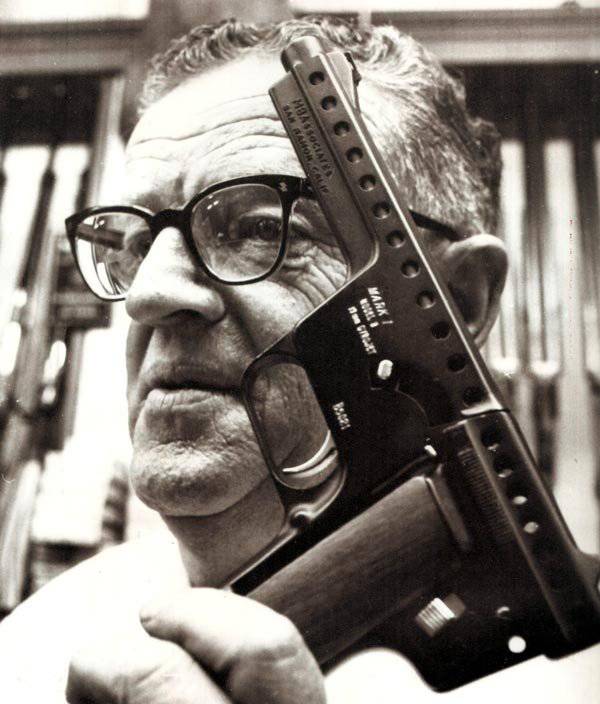
It all began at the very end of 50-x, when the American nuclear physicist R. Maynard, together with his companion A. Beale, founded the company MB Associates (Mainhardt Biehl Associates). At first, their business concerned only the production of solid-fuel signal rockets. In general, nothing interesting. But already in 1960, in MB, on their own initiative, they decided to “send the technology of half a century ago to the scrap” and create a revolutionary new weapon. The idea was seemingly simple: to adapt the existing rocket launcher for firing bullets and add to it a multiply charged magazine. Easy to say. All work took five years. Only in 1965-m was demonstrated the first sample. All five years, Maynard and Biel argued that based on their design, it is possible to create a mass of modifications of various calibers ranging from 7,62 to 20 millimeters. But in 1965, only a 13 caliber mm pistol was ready. The weapon was called Gyrojet ("gyro" rotation and "jet" jet).
The main know-how, on which the whole system was based, was in the pool. In appearance, it was an ordinary pistol cartridge, even if it was a non-standard size: 13x50 mm. Inside it, as it happens, was a powder charge. However, contrary to the foundations, the bullet and the "sleeve" of the new cartridge were made in one piece, and in the bottom of the "sleeve" there were four inclined holes. The interior was filled with rocket powder. From the design of the munition can be concluded about the principle of operation. When the capsule was prickled (in the center of the “cartridge case” bottom), gunpowder ignited, which burned for 0,1 seconds and, flowing through inclined holes, dispersed the bullet and gave it a spin. The advantages were obvious: the bullet leaves the weapon without leaving any parts of the cartridge in it, and, as a result, allows to significantly simplify the design of the weapon. And the cost of a pistol or a gun will be much lower.
Indeed, the gun "Jairodzhet" in its design was much simpler than the usual gunshot "competitors". The barrel, the magazine, the simple trigger mechanism and the frame, that's all. A fixed magazine for six rounds was located in the pistol grip. To load it, it was necessary to pull back the upper casing (like the casing of the bolt of self-loading pistols) and insert one bullet-rocket each. Then the casing returned to its place and the weapon was ready for operation. Thanks to a special ammunition managed to achieve record weight characteristics. So, loaded with cartridges experienced gun version of the Mark I weighed only 340 grams. Subsequent modifications due to the materials used in them (steel instead of aluminum) almost doubled. A separate conversation is the trigger mechanism Gyrojet. His trigger was located not behind the chamber, but in front of him. Accordingly, a small lever of cocking was displayed on the outer surface of the weapon above the trigger guard on the left side. When cocking, the trigger turned approximately 90 ° and held a horizontal position. Pressing the trigger triggered the trigger, which turned and held upright. Reaching the top point, the trigger hit the bullet nose and put it in a cap on a rigidly fixed firing pin. Ignition of a charge-fuel occurred and the bullet took off from a place. Excessive reactive gases were vented through the holes in the sides of the chamber and the barrel cover. The cock was cocked directly by the bullet: when it went out into the barrel, she pressed it to the lowest position, where it was fixed with a sear. Thus, the trigger gun was performed according to the scheme of single action.
The advantages of such a weapon-cartridge complex were obvious:
- the weapon was easy and relatively compact;
- when firing, there was no habitual cotton - the combustion of gunpowder was accompanied by a relatively low hissing;
- cheap weapons;
- good breakdown and killer performance. At a distance in 50 meters, the Jirojet was twice as efficient as the Colt M1911 pistol with the .45 ACP cartridge;
- simplicity of design and, as a result, high reliability.
In 1965, the testing of the first prototype Gyrojet began. And all the supposed positives were fully confirmed. Everything was good, if the fundamental shortcomings of the concept itself had not been revealed. So, promises on the subject of the price was really tempting, if it were not for one thing. The gun itself was indeed a couple of times cheaper than the competitors of the classical scheme. However, the gun itself does not shoot, he needs ammo. And the Gyrojet rocket bullets were worth a lot, to put it mildly, at the time of entering the market. In comparison with pistol cartridges of close caliber, they cost several times more. Not the best buy: a pistol, one cartridge for which costs as much as a store for another.
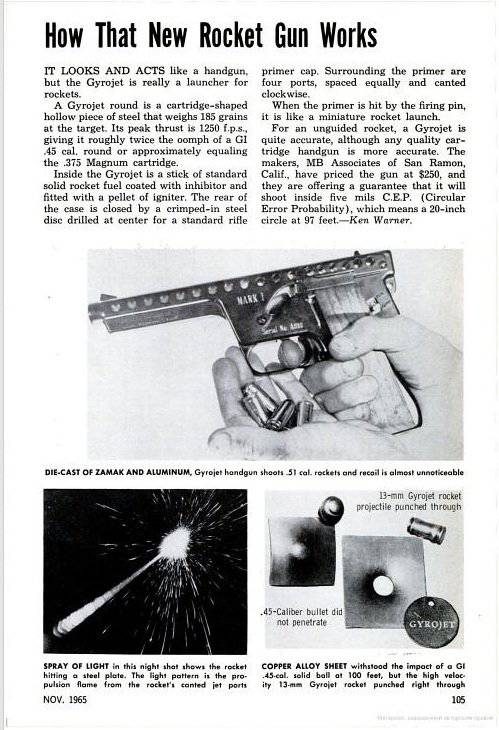
Perhaps the economic disadvantage could be compensated by accuracy and accuracy or other indicators of the battle. And again, not without problems. The main thing was the speed of the bullet. Due to the fact that the powder did not burn immediately, the acceleration of the bullet took some time and lasted even after its exit from the barrel. Therefore, the muzzle velocity of the bullet was approximately equal to 30 m / s, which is clearly not enough for close combat. The maximum speed in 380 m / s was gained only at the end of the “active leg” of the bullet flight, at a distance of about twenty meters from the muzzle. For this feature, one of the American arms magazines called the Gyrojet "a weapon for close combat, which is unsuitable for shooting at short distances." Extremely offensive characteristic. Biel and Maynard tried to correct this flaw. First of all, strengthened the mainspring. According to the designers, a more powerful spring with the help of the trigger held the bullet with a burning charge in the chamber a little longer, which in the end should have significantly increased the initial velocity of the bullet. Indeed, the speed has increased. But not so much that the weapon became effective at short distances.
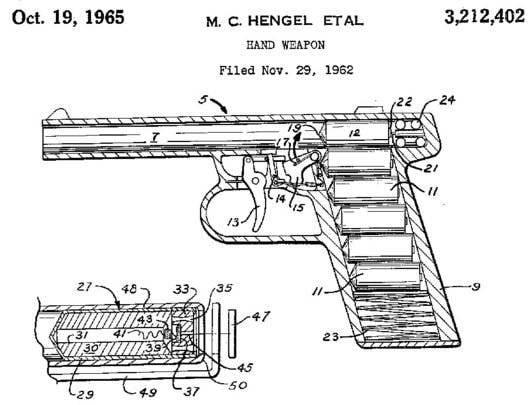
The second bullet problem was sustainability in flight. The barrel of the pistol did not have rifling, and the promotion of the bullet was carried out with the help of oblique "nozzles" in its bottom, like turbo-jets. Ideally, this was supposed to work. But in practice it turned out that the rotation of the bullet at the initial stage of the flight is not enough to ensure the normal stability of the bullet. In addition, MB Associates was not able to drill these holes with the required accuracy. As a result, in flight the bullet was blown aside, accuracy and accuracy were extremely bad. So, when shooting at a distance in 100 meters, the holes on the target were placed in a circle with a diameter of three (!) Meters. And this is at the stated two. The developers of the Jairojad complex tried to improve accuracy by improving the accuracy of the manufacture of bullets, although they did not achieve much success.
In the end, the Gyrojet had a very uncomfortable open sight, a small-capacity magazine and rather large dimensions for a self-defense pocket weapon. Despite all expectations, he did not achieve much success and distribution. There is information that a certain number of these pistols were on their own initiative and acquired at their own expense by military personnel who were sent to Vietnam. Unfortunately for MB Associates, and there their creation has not received positive feedback. Moreover, to all the inherent flaws of the pistol, the climate of Southeast Asia added a number of problems. In particular, the manufacturer 1 declared% of misfires in the jungles of Vietnam was much higher. Naturally, about any centralized procurement or adoption of a speech was no longer going.
In 1968, a new weapon legislation for the public entered into force in the United States. Now weapons with a caliber larger than .50 (12,7 mm) could only be distributed under extremely harsh conditions. Maynard and Biel attempted to get out of these limitations and reduced the caliber of the Jairojet to 12 mm. This version was named Gyrojet Mark II. Alteration of the design and change in production resulted in a tangible increase in the price of pistols and cartridges. Of course, the Gyrojet was still cheaper than the Colt-1911, but expensive rocket bullets once and for all dared potential buyers from it. The last attempt to save the original idea was Gyrojet Carbine. To the original gun added a mount for a plastic butt and barrel extension with fore. Also, instead of the native sights on the upper edge of the gun set frame-pen with the whole, and the fly was placed near the barrel. The elongation of the barrel almost did not affect the shooting performance, so the updated scope was not entirely useful. Yes, and from the butt, to be honest, there was little confusion. He had no effect on accuracy, and he could not help in correcting the recoil for an interesting reason. "Rocket engine" bullets, coupled with the windows in the chamber and barrel casing almost gave no recoil. On one of the promotional photo shooters, demonstrating this, the butt pad rests on his own nose. The photo of the same arrow with a broken nose is missing, so that, apparently, the shot really did without injuries.
Since the carbine did not have a significant improvement in performance, it also failed to gain popularity. Several dozens of hands went to arms lovers, and were used exclusively for entertaining shooting — it was almost impossible to hunt or defend with the Jairojet. Finally, in 1970, the Gyrojet project was curtailed due to numerous failures and the fundamental impossibility of correcting them. Currently, both versions of the pistols and carbines are in many collections and sometimes they even manage to shoot. But this happens infrequently. From the 70 of the year, the bullets-rockets are not made, and those that have remained since those times cost 40 dollars apiece and higher.
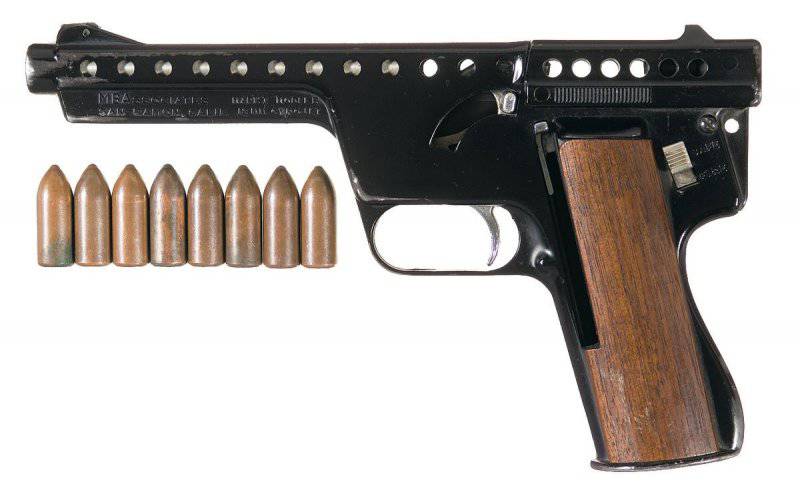
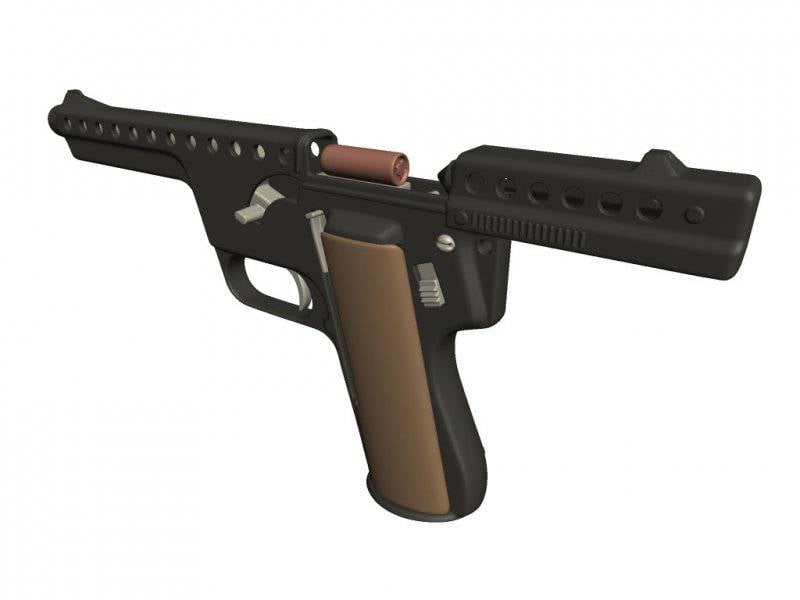
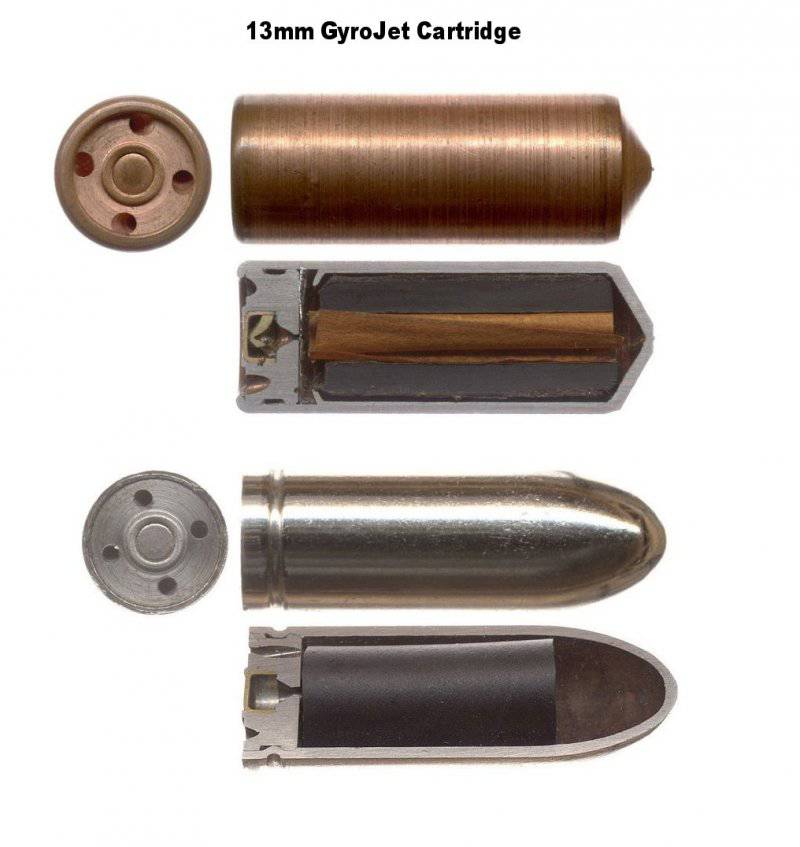
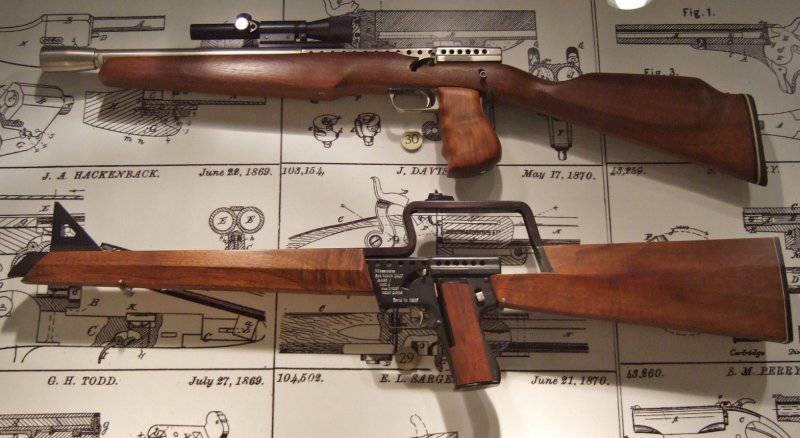
Information